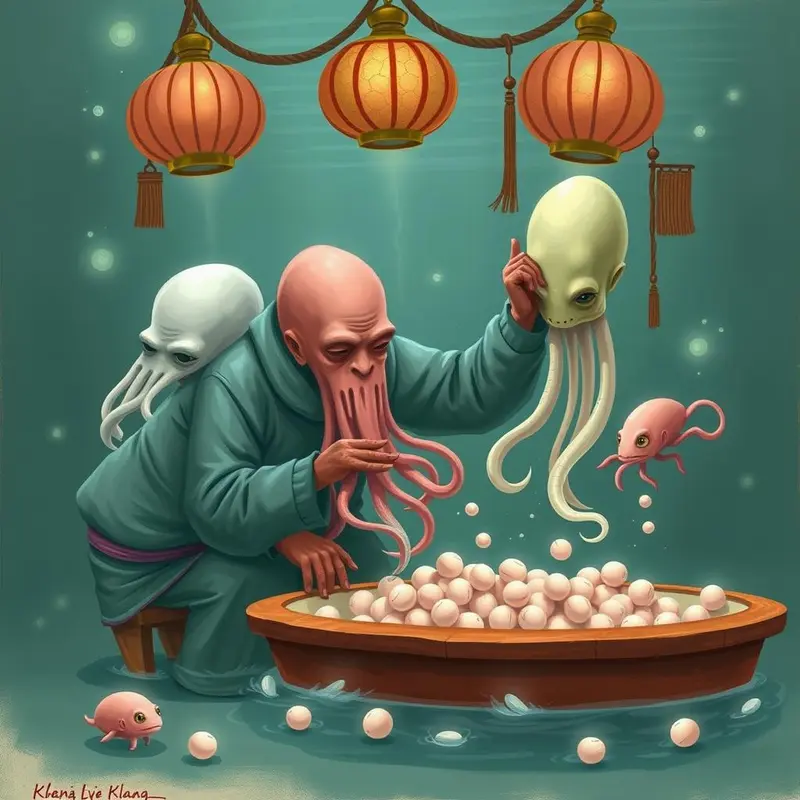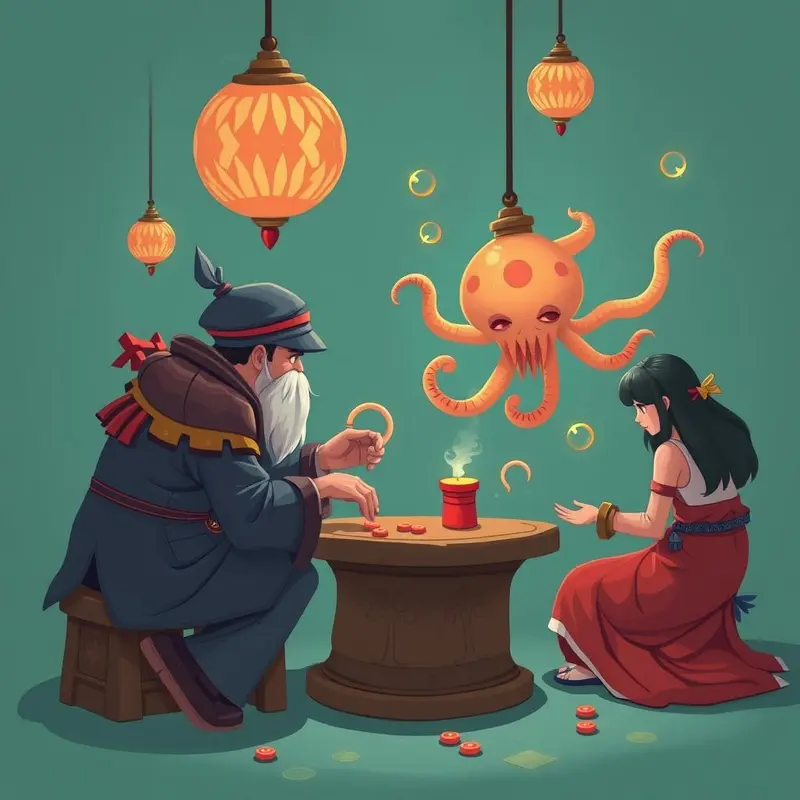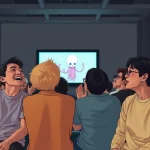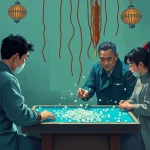‘Squid Game’, bộ phim sinh tồn nổi tiếng của Hàn Quốc, không chỉ đơn thuần là một loạt các trò chơi sinh tồn mà còn là một tác phẩm phản ánh sâu sắc các vấn đề xã hội. Được sáng tạo bởi Hwang Dong-hyuk, bộ phim hé mở những khía cạnh tối tăm của con người khi mặt trái của xã hội và sự không công bằng kinh tế lên cao trào. Bài viết này sẽ đi sâu vào các chủ đề và biểu tượng phản ánh sự chỉ trích xã hội, cùng với các kỹ thuật điện ảnh mang lại trải nghiệm vừa hồi hộp vừa sâu sắc cho người xem.
Decoding the Dark Playground: How ‘Squid Game’ Mirrors Society’s Brutal Inequalities

Beneath its neon-lit playgrounds and childhood games turned deadly, Squid Game delivers a scathing critique of modern capitalism’s dehumanizing effects. The series uses visceral symbolism to expose how systemic inequality reduces human lives to mere commodities. From the pink-suited guards with shape-masked faces to the candy-colored dormitory, every aesthetic choice reinforces the show’s central theme: the grotesque spectacle of exploitation.
At its core, the games themselves—like Red Light, Green Light or the titular Squid Game—are metaphors for societal rigging. Players (read: citizens) cling to the illusion of fairness, even as the system arbitrarily eliminates them. The glass stepping stones in Episode 7 epitomize this, where luck outweighs skill, mirroring how economic mobility often depends on birthright rather than merit. Hwang Dong-hyuk’s direction amplifies this through recurring motifs: the ever-present piggy bank dangles hope like a carrot, while the geometric shapes on masks strip enforcers of individuality, reducing them to cogs in a profit-driven machine.
The show’s most haunting commentary lies in its character arcs. Seong Gi-hun’s transformation from a lovable loser to a hollow victor underscores the cost of survival in a zero-sum world. Meanwhile, the VIPs—watching the carnage through gold masks—embody global elites who treat human suffering as entertainment. This duality resonates globally, explaining why the series struck a nerve from Seoul to São Paulo (as explored in Beeboa’s analysis). Even the honeycomb dalgona challenge becomes an allegory for debt traps: fragile, easily shattered, and designed to punish the desperate.
By framing brutality through childlike aesthetics, Squid Game holds up a funhouse mirror to our collective complicity. It asks: In a world where 456 people fight for one winner’s purse, aren’t we all players—or spectators—in some capacity?
Visual Storytelling and Worldwide Frenzy: How ‘Squid Game’ Captivated the Globe

The unprecedented global success of Squid Game is as much a testament to its gripping narrative as it is to its masterful cinematic techniques. Directed by Hwang Dong-hyuk, the series employs a visual language that amplifies its themes of economic disparity and human desperation. The use of vibrant, almost surreal colors contrasts starkly with the grim violence, creating a jarring yet hypnotic aesthetic. This duality mirrors the show’s critique of capitalism—where bright, childlike games mask brutal survival instincts.
One of the most striking elements is the production design. The labyrinthine sets, inspired by Korean childhood games, are both nostalgic and sinister. The giant doll from Red Light, Green Light, with its uncanny valley effect, became an instant cultural icon. Cinematographer Lee Hyung-deok’s framing often isolates characters in wide shots, emphasizing their vulnerability within the game’s mechanized cruelty. Close-ups, meanwhile, capture the raw desperation in their eyes, humanizing them amid the chaos.
The soundtrack further elevates the tension. Composer Jung Jae-il blends eerie classical motifs with pulsating rhythms, underscoring the unpredictability of each round. The absence of music in key moments—like the night-time massacres—heightens the horror, leaving viewers in unsettling silence.
Globally, Squid Game shattered records, becoming Netflix’s most-watched series within weeks. Its resonance transcended language barriers, sparking debates about inequality from Seoul to São Paulo. Critics praised its unflinching social commentary, though some questioned its graphic violence. The show’s memes, Halloween costumes, and even real-life recreations of the games proliferated online, cementing its status as a phenomenon. For a deeper dive into its cultural impact, explore this analysis.
What makes Squid Game unforgettable is its ability to marry style with substance. Every visual choice—from the pink-suited guards to the Escher-like staircases—serves its dystopian allegory. It’s a series that doesn’t just entertain; it imprints itself onto the viewer’s psyche, leaving a lingering discomfort about the games we all play in society.
Final thoughts
Cuối cùng, ‘Squid Game’ không chỉ đơn thuần là một bộ phim giải trí hấp dẫn mà còn là một tác phẩm nghệ thuật sâu sắc, mang đến cái nhìn rõ nét về bản chất con người và xã hội hiện đại. Với các chủ đề đa chiều và kỹ thuật điện ảnh xuất sắc, bộ phim đã làm nổi bật sự phức tạp của cuộc đời và những lựa chọn mà con người phải đối diện trong thời đại kinh tế khó khăn. Những thông điệp này làm cho ‘Squid Game’ không chỉ là một trải nghiệm xem phim mà còn là một bài học đáng suy ngẫm.
Khám phá thêm và thưởng thức những bộ phim đỉnh cao tại Beeboa – Trang web đánh giá phim số 1!
Learn more: https://beeboa.com
About us
Beeboa là nền tảng đánh giá phim cung cấp thông tin chi tiết, phân tích và bình luận về các bộ phim mới nhất, giúp bạn tìm kiếm những tác phẩm phù hợp với sở thích của mình.


